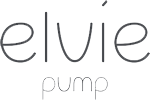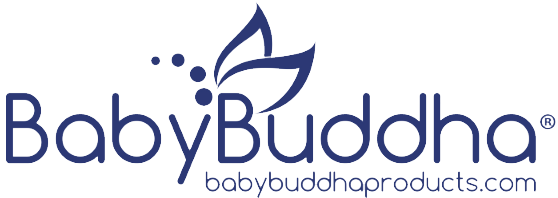Caring for Sore Nipples in Breastfeeding

No one really prepares you for this part. You hear that breastfeeding is natural, maybe even magical, but not that it can come with stinging, cracking, or pain that makes you flinch when your baby latches.
If your nipples feel sore, raw, or just worn down, you’re not alone. On average, 80% to 90% of breastfeeding women experience nipple pain or fissures, especially in the early days when both body and baby are still learning the rhythm.
What matters is that the pain is not something you have to push through. It’s your body’s way of asking for care, for a small shift, for support. Let’s take a kind, honest look at why it happens and how to feel better.
Why Do My Nipples Hurt While Breastfeeding?

In the early days of pregnancy, nipple pain is more common than most people admit. Your baby is learning to feed, your body is adjusting to a new rhythm, and your nipples may not be used to this kind of constant use.
The most common reason for nipple pain? A shallow latch. When your baby doesn’t take enough of the breast into their mouth, more pressure is placed on the nipple itself, which can lead to soreness, pinching, or even damage over time.
Other Reasons for Nipple Pain During Breastfeeding
- Long or frequent feeds: Cluster feeding and growth spurts can leave your nipples feeling overworked.
- Moisture and friction: Damp nursing pads, tight bras, or wet nipples can make skin more prone to cracking.
- Baby’s anatomy: Things like tongue tie or a strong sucking reflex can make feeding more intense than usual.
- Thrush (yeast infection): This can show up as stinging, itching, or deep pain during or after feeds.
- Poor positioning: Even a small shift in posture or angle can change the way your baby latches. Improper alignment can put extra stress on the nipple and cause soreness after nursing.
What’s Normal vs. What Needs a Second Look
Some tenderness in the beginning is completely normal. Your nipples are doing something brand new, and it takes a little time for your skin — and your baby — to adjust.
Here’s what’s typically normal:
- Your nipples feel sore or sensitive during the first few days or weeks
- There’s a brief sting or pull right when your baby latches, but it fades during the feed
- You feel some rawness after a long cluster-feeding session
But some signs mean it’s time to pause and get support:
Not normal:
- Sharp, shooting, or burning pain that doesn’t go away
- Cracks, blisters, or bleeding
- Nipples that look pinched or misshaped after feeding
- Pain that gets worse over time, not better
- Pain that makes you dread nursing or feel anxious about the next feed
If something feels off, listen to your gut. Pain is never something you have to push through. It’s your body asking for a bit more support, and getting help early can make all the difference.
How to Soothe Sore Nipples: What Really Helps

Nipple pain can feel all-consuming, but even a few small changes can help you feel more at ease. Here are some gentle, mom-approved tips to bring comfort without interrupting your feeding journey:
- Let them air-dry after feeds: A few minutes of open air after each feed can help soothe soreness and keep moisture from building up.
- Switch nursing pads often: If you’re using pads, try changing them after every feed so your skin stays clean and dry.
- Stick with soft, breathable fabrics: Go for cotton bras without underwires to let your skin breathe. The less pressure, the better.
- Skip soaps and harsh washes: Warm water is enough. Soaps can strip natural oils and make dryness worse.
- Avoid nipple shields unless advised: They may seem like a quick fix, but shields or shells don’t always improve latch and can sometimes create new issues.
- Break suction gently: Slide a clean finger between your baby’s gums before unlatching to avoid painful pulling.
- Cool things down between feeds: Gel pads or a cool cloth placed gently on the breast can feel soothing between nursing sessions.
- Take short pumping breaks if needed: If your nipples feel too raw, give them a breather by expressing milk once or twice and bottle-feeding. Just a break or two can help you reset.
With time, care, and a few of these small steps, comfort becomes possible again.
When to Call a Lactation Consultant or Doctor
Breastfeeding nipple pain is common, but support is often overlooked. In fact, a study found, only 45% of women who experience nipple pain during breastfeeding reach out for help.
Many wait it out, hoping it will pass. But care at the right time can make things easier, both for your healing and your feeding journey.
Reach out to a lactation consultant or doctor if:
- The pain is sharp and intense: Discomfort at latch can be common early on, but pain that lingers or feels severe should be checked.
- Your nipples are cracked, bleeding, or have open sores: This may need medical care and time to heal, and it’s perfectly okay to take that time.
Final Words
Breastfeeding is often described as a beautiful bonding experience, and it truly can be. But if you are dealing with pain, it is okay to feel overwhelmed or unsure. That does not make you any less of a mother.
Your body is doing something incredible. And your baby is learning right along with you.
Sore nipples do not mean you have to stop. But they also do not mean you have to push through pain. With a little support, some gentle changes, and time to heal, things can feel better.
Take a moment for yourself. Ask for help if something does not feel right. Be gentle with your body. You are doing something special, and even on the hard days, you are showing up with so much love.
You are doing beautifully. Keep going, one feeding at a time.
Frequently Asked Questions (FAQs)
1. How long do sore nipples last while breastfeeding?
Mild soreness is common in the first week. For most moms, it eases as the latch improves. If the pain lasts beyond two weeks or gets worse, it’s a sign to check in with a lactation expert.
2. Is it okay to keep breastfeeding if my nipples are cracked?
Yes, but with care. Use a safe nipple balm or express a few drops of breast milk to help with healing. Try adjusting the latch and consider giving yourself a short break by pumping or using a shield. If cracks don’t heal, consult your provider.
3. What’s the best nipple cream for breastfeeding moms?
Lanolin is widely used and considered safe, but plant-based balms with ingredients like coconut oil or calendula are great options too. Choose one that doesn’t need to be wiped off before feeding.
4. Can nipple pain mean something is wrong with my baby’s latch?
Often, yes. A poor latch is one of the leading causes of breastfeeding nipple pain. If your nipple comes out looking flattened, white-tipped, or if you hear clicking sounds during feeds, it may be time to revisit positioning.
5. Will using a nipple shield help or hurt my milk supply?
Nipple shields can offer temporary relief, especially if your nipples are cracked or healing. But they should be used under the guidance of a lactation expert, as prolonged use without support may affect milk transfer or supply in some cases.










